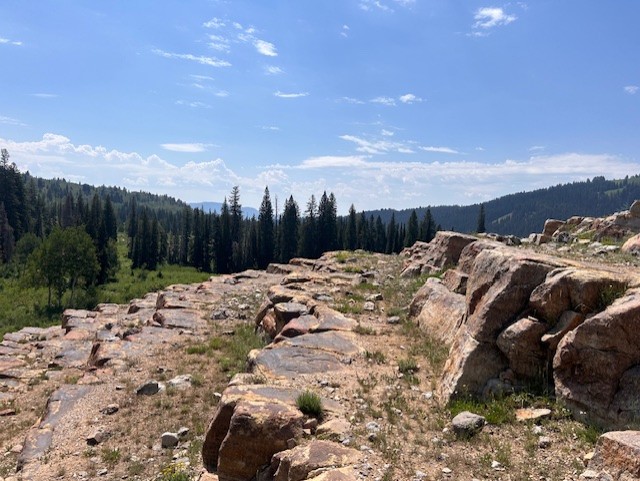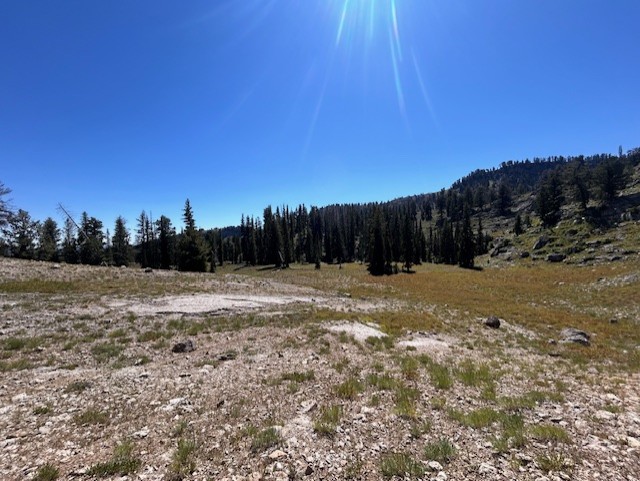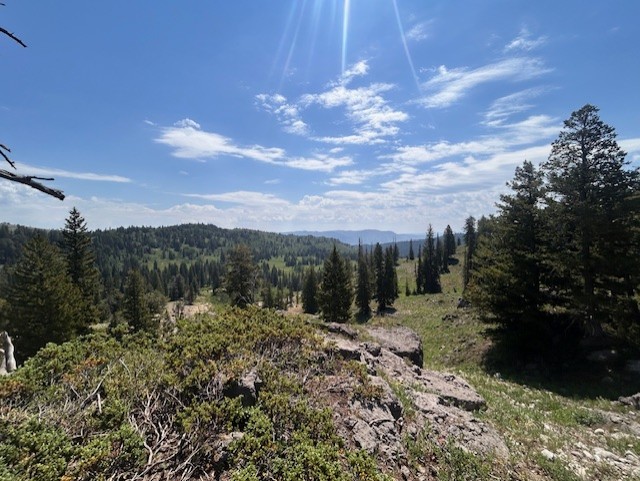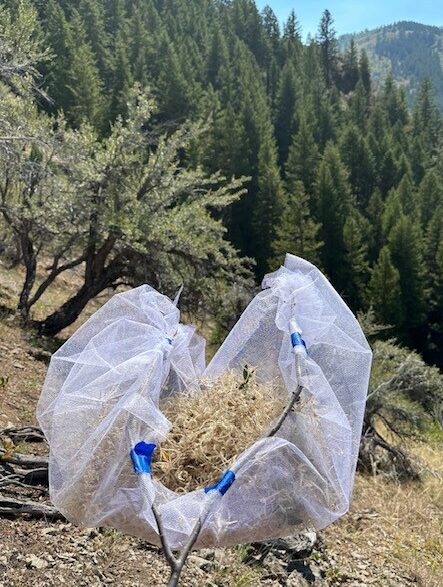In recent weeks, many of our days have been consumed with harvesting seeds. We have spent all season scouting and monitoring native plant populations, and now that the summer is coming to an end and fall is just around the corner, many of the populations are setting seed. It has been a mad scramble to get all of the seed, which seemingly matured at the same time, before it blows away with the wind.
Most recently, we had the opportunity to collect seed from a population of Lomatium triternatum. The population is nestled between high mountain peaks in one of the highest elevated areas of our forest. The 3/4 mile hike to get to the population is beautiful, and requires one to pass by a clear mountain lake, meadows of wildflowers, and craggy red cliffs. It is the biggest population of any species that we have scouted this year. The population covers several acres and is very dense. If you stand upon one of the rocky mountain peaks, you can observe small tufts of greenish-blue foliage, the Lomatium, as far as the eye can see. It is a beautiful sight to behold.



Because of the vastness of this population and the nature of the seeds to mature at different rates even within the same plant, we opted to do multiple collections at this site. This meant that we collected 10 percent or less of the seed for a couple days. For obvious reasons, I didn’t mind spending multiple days here. By the end, we had a sizeable collection of seed, and it was a successful collection.
Just before collecting Lomatium, we collected Curl-Leaf Mountain Mahogany seeds. It was by far our most difficult harvest of the season so far. We had harvested Alder-Leaf Mountain Mahogany seeds earlier in the season. This is how we learned that seeds of the Mountain Mahogany variety can be very irritating to the skin and eyes. The seeds themselves are achenes that resemble a sort of twisted mouse tail, covered in tiny white hairs. Apparently, the tiny hairs can become lodged in your skin and eyes and cause pain, and irritation. It only took a few minutes of harvesting before we noticed our hands, arms, and eyes were in pain. We might as well had been collecting fiber glass from what it felt like.
But that was weeks ago, and this time around, when collecting the Curl-Leaf Mountain Mahogany, we came prepared. We brought long sleeves and latex gloves. Those seemed to do the trick although I did find myself wondering if an entire hazmat suit might have been better. Luckily, it seemed that the fiber-glassness of these seeds wasn’t quite as horrible, but the harvest was still a doozy. The plants were located on the side of a very steep mountain. My co-intern has an innate ‘mountain goatness’ about her that enabled her to traverse the steep hill with little to no effort at all (something that I’ve grown to envy). But I’m not nearly as skilled, so it took me a while to get up to the plants.
Unlike Alder-Leaf Mountain Mahogany, which is more of a large shrub, Curl-Leaf Mountain Mahogany grows into small trees averaging up to 12 feet tall. So although we had reached the plants by traversing up the steep mountain, we found that we couldn’t reach the seeds due to the height of the plants. Since we were already in the area, we got creative with our solution to this problem, and crafted our very own “butterfly nets”. Although not very pretty, they got the job done.

This month, we also had the chance to harvest more Lomatium dissectum. Sadly, we weren’t able to get as much of that as we had hoped because the population was trampled by grazing animals before we could do a second pass. We also harvested some Heliomeris multiflora – a dainty yellow flower. That was one of the easiest harvests of the season so far. And lastly, but not least, Milkweed. Go team monarchs!
